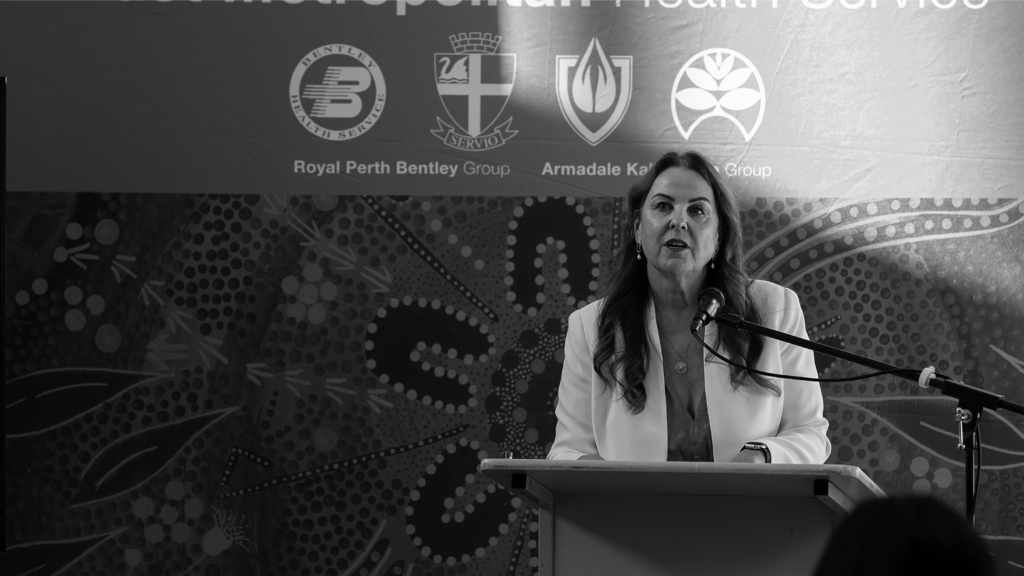Significant challenges 2024-25
A complex mix of issues across various sectors posed significant challenges in 2024-25.
Among these was the ongoing challenge of meeting rising health service demands due to rapid population growth with existing infrastructure.
EMHS also supports many priority health groups with complex needs and cultural and linguistic diversity, including a large Aboriginal community, people with mental illness, those experiencing homelessness (especially in the inner city), and pockets of high socio-economic disadvantage.
Additionally, a sector-wide shortage of health workers continues to make workforce recruitment challenging in some areas, while protecting existing staff from burnout and patient aggression remains a priority.
Addressing these challenges requires coordinated efforts from government, health services and community stakeholders, along with sustained investment in people, infrastructure and innovation.
Our EMHS Clinical Services Plan – Towards 2035, released in May, is our roadmap for navigating many of these major challenges now and over the next decade, supported by many other detailed plans for individual areas of our operations.
Rapid population growth and demand
EMHS’ catchment includes some of the fastest-growing areas in Western Australia.
Within the next 11 years we are expected to have the largest population among metropolitan health regions, reaching 903,653 people by 2031-32.
In particular, our South East health district (the location of Armadale Health Service), is expected to increase by 26.4 per cent and Swan and Hills (location of St John of God Midland Public Hospital) by 22.5 per cent.
We are also the only metropolitan health region with an increasing birth rate, particularly in our high growth rate areas.
Rapid growth increases pressure on our services, including emergency departments, inpatient beds, elective surgery, maternity care and outpatient services. There has also been a greater need for community-based care, aged care and chronic disease management.
We are tackling this on a myriad of fronts including focusing on improvements and innovation to enhance capability and capacity.
These include our community and virtual healthcare-at-home service, East CareConnect, which incorporates Home Hospital, Health in a Virtual Environment (HIVE), Co-HIVE, and GEM@home (Geriatric Evaluation and Management); and infrastructure projects such as the Bentley Health Surgicentre and Byford Health Hub, which will improve health access for our communities when they open.
Infrastructure barriers
The majority of our buildings are more than 70 years old. Maintaining and upgrading infrastructure to support modern service delivery within budgetary constraints remains a key area of focus.
The $460 million in State and Commonwealth election commitments pledged this year for improvements at Royal Perth Hospital (RPH) and St John of God Midland Public Hospital (SJGMPH) will greatly assist us in addressing some of the most pressing infrastructure issues. The State budget in June provided $10 million to progress planning for expansions to SJGMPH and RPH Emergency Departments.
Serving a diverse community
Our catchment has many priority groups with increased and complex medical needs.
These groups have been identified as experiencing health inequity, placing them at higher risk of poorer health outcomes and rates of healthcare usage.
People living with mental illness, experiencing homelessness, facing socio-economic hardship, living with a disability, residing in rural or remote areas, or from culturally and linguistically diverse backgrounds – as well as Aboriginal and LGBTQIA+ people − often face overlapping and multi-faceted challenges when accessing health care.
These groups often rely more heavily on the public health system than on primary care due to cost, accessibility and systemic barriers.
Emergency departments and public hospitals are often the default access points for care.
A key part of our planning is finding better ways to improve access to care for priority groups, ensuring their voices are included in shaping the solutions that affect them.
Sustainable workforce
The ongoing global shortage of healthcare workers continues to make recruitment and retention challenging.
Addressing increasing psychosocial challenges in the workplace is also a priority.
In response, we have a range of targeted initiatives.
These include innovative and proactive recruitment strategies, new safety measures to protect and empower our staff, supportive work environments, flexible working and enhanced wellbeing programs.
A key initiative in 2024–25 was the launch of our CaREPlan program, co-designed with staff to enhance our workplace environment — particularly by strengthening physical and psychological safety through our Behaviour Support Team.
Sustainable Other challenges in a rapidly changing system
Other factors are adding to the mix of challenges we face.
Meeting our patients’ expectations for personalised, timely and high-quality care increasingly requires access to advanced and costly technologies and services.
At the same time, gaps in community and primary care – such as access to general practitioners, local clinics and mental health support – are placing additional pressure on our system.
Driven by factors including cost and appointment availability, many people are turning to us for issues that could be managed in primary care settings.
Finally, although technology offers promising opportunities for enhancing care, the implementation of new systems and processes remains a complex and challenging task.

